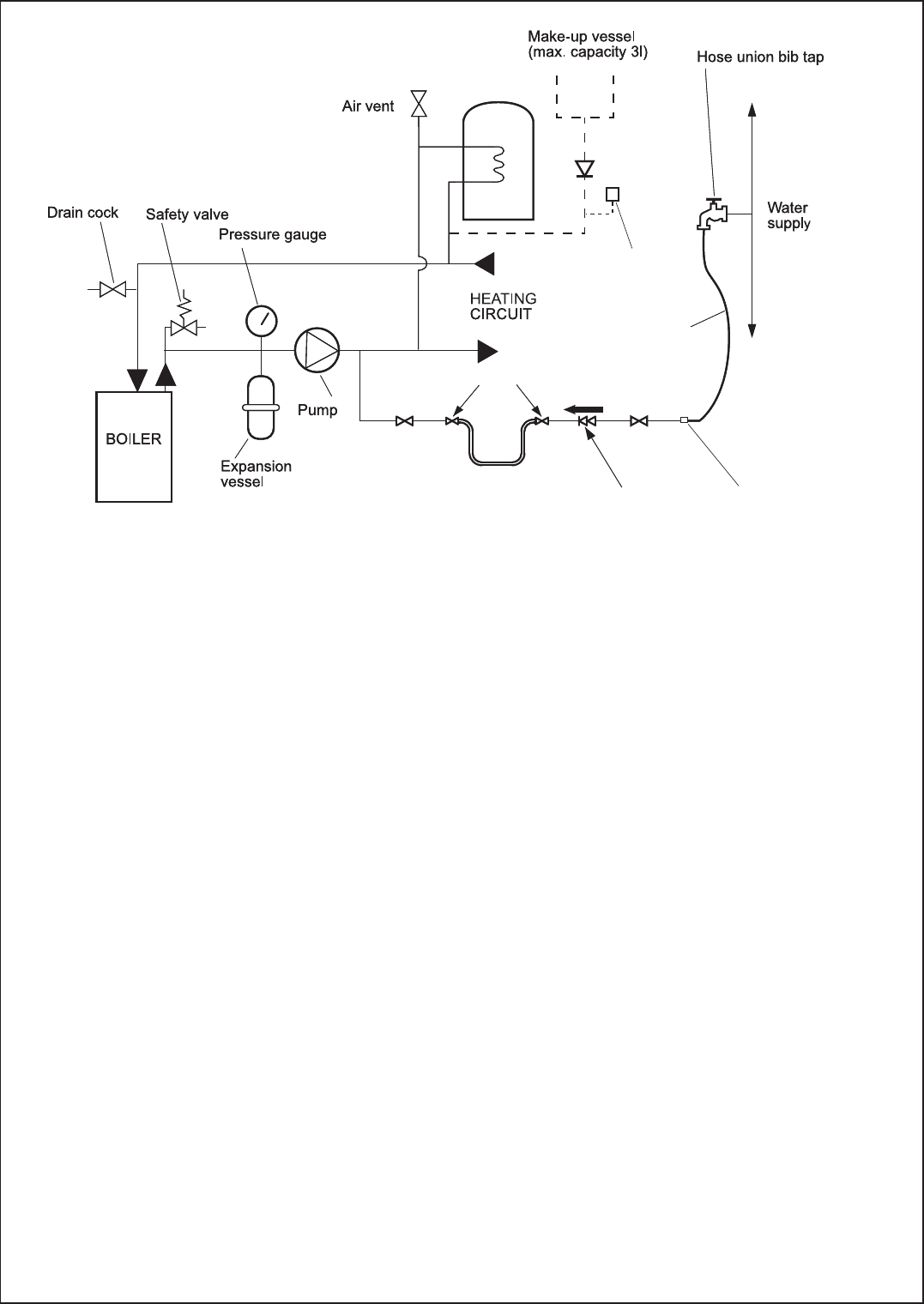
classic HE - Installation & Servicing
11
GENERAL
Non-return
valve
Automatic
air vent
Hose unions
Additional
stop valve
Hose connector
Hosepipe
(disconnect
after filling)
Double check valve
assembly
(note direction of flow)
Temporary hose
(disconnect
after filling)
ecl6060
5
SEALED SYSTEM REQUIREMENTS
Note.
The method of filling, refilling, topping up or flushing sealed
primary hot water circuits from the mains via a temporary hose
connection is only allowed if acceptable to the local water
authority.
1. General
a. The installation must comply with the requirements of
BS.6798 and BS.5449.
b. The installation should be designed to work with flow
temperatures of up to 82
o
C.
c. All components of the system, including the heat
exchanger of the indirect cylinder, must be suitable for a
working pressure of 3 bar (45 lb/in
2
) and temperature of
110
o
C. Care should be taken in making all connections
so that the risk of leakage is minimised.
2. Safety Valve
A spring loaded safety valve complying with the relevant
requirements of BS.6759 must be fitted in the flow pipe, as
close to the boiler as possible and with no intervening valve
or restriction. The valve should have the following features:
a. A non-adjustable pre-set lift pressure not exceeding 3
bar (45 lb./in
2
)
b. A manual testing device.
c. Provision for connection of a discharge pipe. The valve
or discharge pipe should be positioned so that the
discharge of water or steam cannot create a hazard to
the occupants of the premises or cause damage to
electrical components and wiring.
3. Pressure Gauge
A pressure gauge covering at least the range 0-4 bar (0-60
lb./in
2
) must be fitted to the system. The gauge should be
easily seen from the filling point and should preferably be
connected at the same point as the expansion vessel.
4. Expansion Vessel
a. A diaphragm type expansion vessel must be
connected at a point close to the inlet side of the pump,
the connecting pipe being not less than 15mm (
1/2"
nominal) size and not incorporating valves of any sort.
b. The vessel capacity must be adequate to accept the
expansion of the system water when heated to 110
o
C
(230
o
F)
c. The charge pressure must not be less than the static
water head above the vessel The pressure attained in
the system when heated to 110
o
C (230
o
F) should be at
least 0.35 bar (5lb/in
2
) less than the lift pressure of the
safety valve.
For guidance on vessel sizing refer to the table in Frame
6. For further details refer to BS.5449. For IE refer to the
current edition of I.S. 813.
5. Cylinder
The cylinder must be either of the indirect coil type or a
direct cylinder fitted with an immersion calorifier which is
suitable for operating on a gauge pressure of 0.35 bar
(5lb./in
2
) in excess of the safety valve setting. Single feed
indirect cylinders are not suitable for sealed systems.
6. Make-up Water
Provision must be made for replacing water loss from the
system, either:
a. From a manually fitted make-up vessel with a readily
visible water level. The vessel should be mounted at
least 150mm (6") above the highest point of the
system and be connected through a non-return valve to
the system, fitted at least 300mm (12") below the
make-up vessel on the return side of the domestic hot
water cylinder or radiators.
b. Where access to a make-up vessel would be difficult by
pre-pressurisation of the system. Refer to 'Filling.'
201850-6.pmd 21/02/2008, 12:5711


















